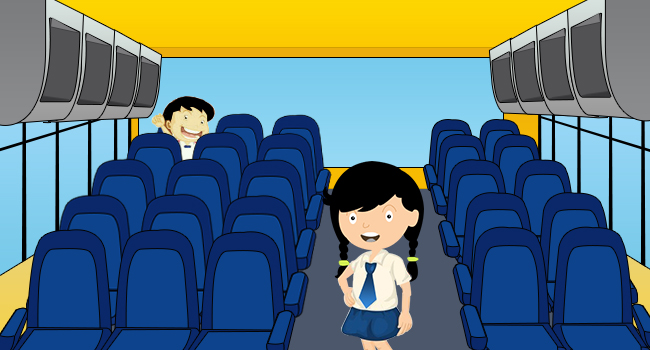Without doubt, the safety offered by a school bus to school students cannot be compensated by any other means of transportation. But we can definitely increase the safety features of school buses by equipping them with a GPS Tracking System (which may provide students with RFID cards) and other safety measures.
Staying seated on the school bus ensures safety. The less a bus driver is distracted, the more will he concentrate on driving. Shifting seats inside the bus and moving away from the seats can cause injury to the students. Seats of the bus are arranged to make the journey safe.
There are certain tips to keep in mind while choosing the right school bus seat of the bus. Safety should be the prime consideration inside the school bus. A typical school bus consists of seats with 39 inches wide and with maximum seating capacity of 3.
Wait for the bus in the safest place. Get in to the bus without rushing forming a queue. Hold the hand rail of the bus, while getting inside the bus. Choose the right school bus seat inside the bus.
Tips to choose the right seats revealed;
“When you make a choice, you change the future.” ― Deepak Chopra
It is important to have a clear idea about, how the students should be seated. Reserving permanent seats for students is an effective method of reducing the rush inside the school bus.
It’s better to finalize the seats according to the route of the bus. Those who board the bus early and leave late can be given the last seats. Students who board the bus late and leaves early can be given front seats. Authorities must take special consideration while choosing seats for students. If any student finds the allotted seat uncomfortable, there should be a facility to report it.
The bus is generally divided in to three parts;
- The front is calm but there can be noise from the engine
- Middle is half noisy and half silent
- The back is bumpy, without any noise of the engine
Step 1
The allotted seats should be carefully noted by the children. Make sure that you be seated in the right seat. No exchanging of seats should be allowed. If there is any uncomfortable situation, it can be reported to the bus supervisor.
Step 2
After finding the most comfortable seat for each student, make sure that no other student is reserved for that seat. Seat number can be allotted to children in order to eliminate confusion.
Step 3
If there happens a collision of seat, there should be a second option. A bus supervisor can help with the seating arrangement of the children.
Step 4
Divide between children who want to sit by the left windows or the right windows. Bags and other parcels must be kept in the lap of the students. Throwing anything out of the bus is dangerous, children must never do that.
Step 5
After picking the most convenient seat, enjoy peaceful ride. Do not move away from the seat or exchange seats, while the bus is moving. Children should not eat or drink anything in the bus. After entering the bus, children must be seated properly, facing forward. Avoid putting hands and head outside the bus.
Step 6
Never allow annoying people to sit next to you. It is better to make sure that a known person sits next to you. Making noise and fighting inside the bus is strictly prohibited. Always remember children misbehaving inside the bus can loose the privilege of travelling in the school bus
Safety message about the “danger zone”;
- If you can touch the school bus, you are standing too close
- Step out of the danger zone with 10 giant steps
- Make sure, you can see the driver and the driver can see as well
- Never stop to pick up anything dropped in the danger zone, ask an adult or driver for help
Ironically, assigning a particular seat for each school bus student is the best means to handle mischievous children. Also, appropriate seating for students can simplify your task by saving your valuable time.
